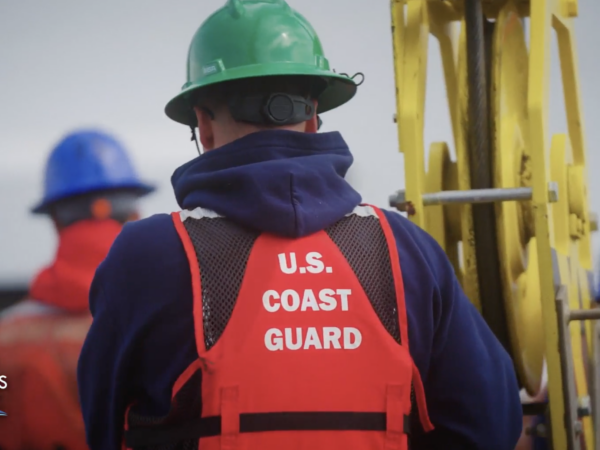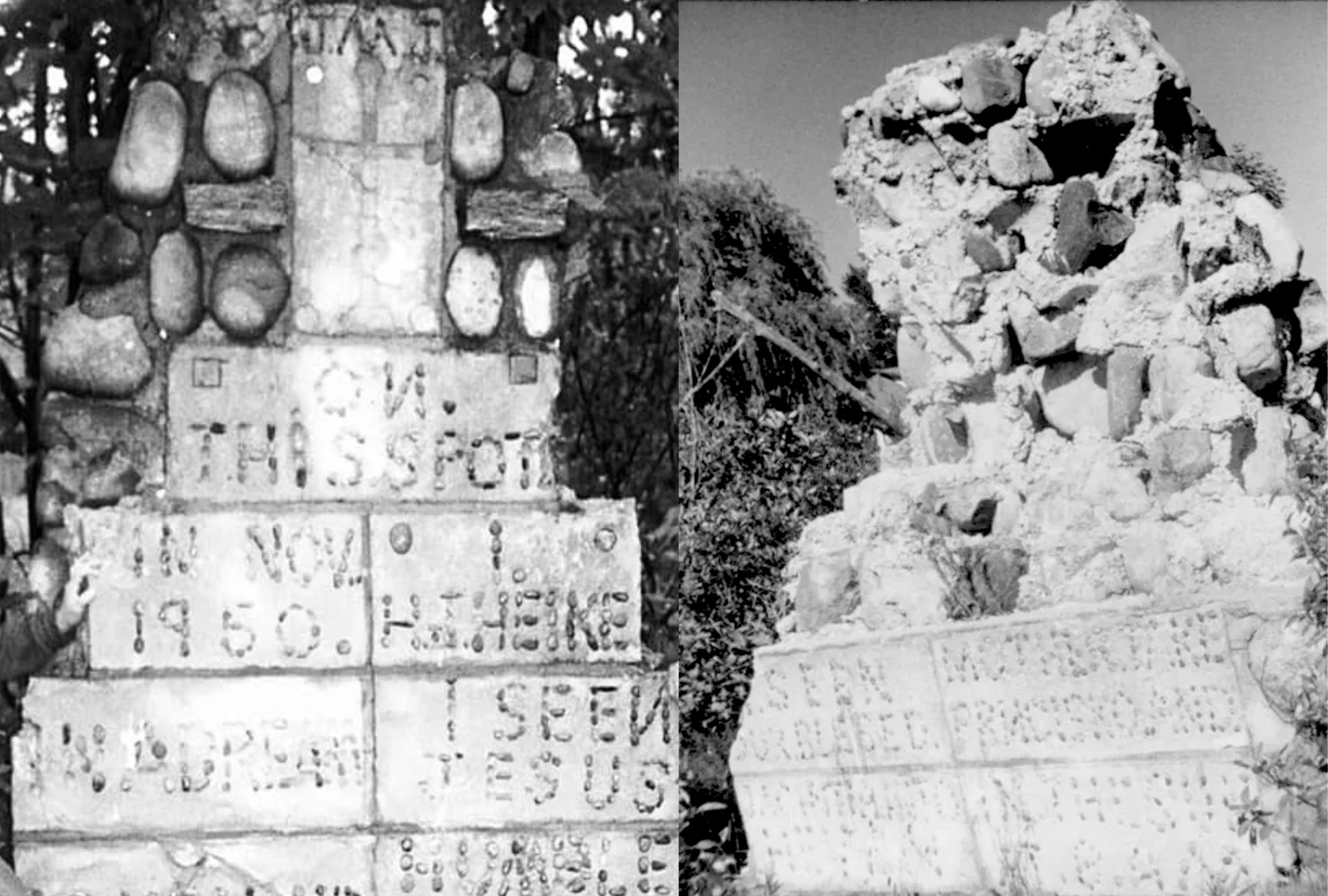
By Michael Livingston, Interlochen Public Radio
Points North is a biweekly podcast about the land, water and inhabitants of the Great Lakes.
This episode was shared here with permission from Interlochen Public Radio.
Sometime in the mid-1900s, Henry J. Heike moved to the northwoods of Cheboygan, Michigan. There, he began to receive various religious visions from Jesus Christ, Mary, and Joseph. Heike, a bricklayer from Detroit, decided to commemorate those experiences by building great stone monuments.
From there the story takes a spine-tingling twist. Legend has it that Heike received so many visions, he eventually went mad from them – to the point of murder.
But is any of it true? How does so much rumor and mystery come to surround Henry J. Heike? And why has his legend lasted so long in this northern Michigan community?
CREDITS:
Host / Producer: Michael Livingston
Editor: Morgan Springer
Additional Editing: Peter Payette, Ed Ronco, Ellie Katz
Music: Apollo Diedre, Storm Creek, by Blue Dot Sessions, and of birth by DAY

TRANSCRIPT:
MICHAEL LIVINGSTON, HOST: This is Points North, a podcast about the land, water and inhabitants of the Great Lakes. I’m Michael Livingston, in for Dan Wanschura.
I want to tell you a story that might send chills up your spine. It’s about a man named Henry J. Heike. Sometime in the mid-1900s he moves to the Straits of Mackinac to this little town called Cheboygan, Michigan.
(sounds of nature)
Heike makes a homestead in the woods there, miles away from nearby towns. He builds a cabin, digs a well. Legend has it, he gets married and has children. But in the solitude of the backcountry – eerie things start to happen.
It’s the fall of 1950 – and Heike says he receives a vision of the holy family – Jesus Christ, the Virgin Mary and Joseph. We know this because, right where he has the vision, he builds a great stone tomb to mark his experience.
(sounds of building with stone)
He receives at least one more vision, which leads to another tomb. Nobody knows how. But many people of Cheboygan believe Heike went mad from his visions. Insane to the point of murder.
This is how Mike Lindsay remembers the legend – he grew up in Cheboygan in the 90s.
MIKE LINDSAY: The story that I heard, in kind of its simple form was that you know, this guy out in the woods in his cabin … And in the middle of the night, he had a dream or a vision that Jesus came to him … and basically told him to murder his wife.
LIVINGSTON: He murders his wife and his kids and buries them under the tombs.
(sounds of shoveling)
Mike Lindsay says when he was in grade school, he rounded up a group of friends on Halloween night and convinced a parent to drive them out there.
LINDSAY: You have to start from when you turn off the main road onto this really dark, overgrown two-track that starts to go through the woods. You know, there’s no lights, it’s dark out, and you’re only seeing what your headlights are showing.
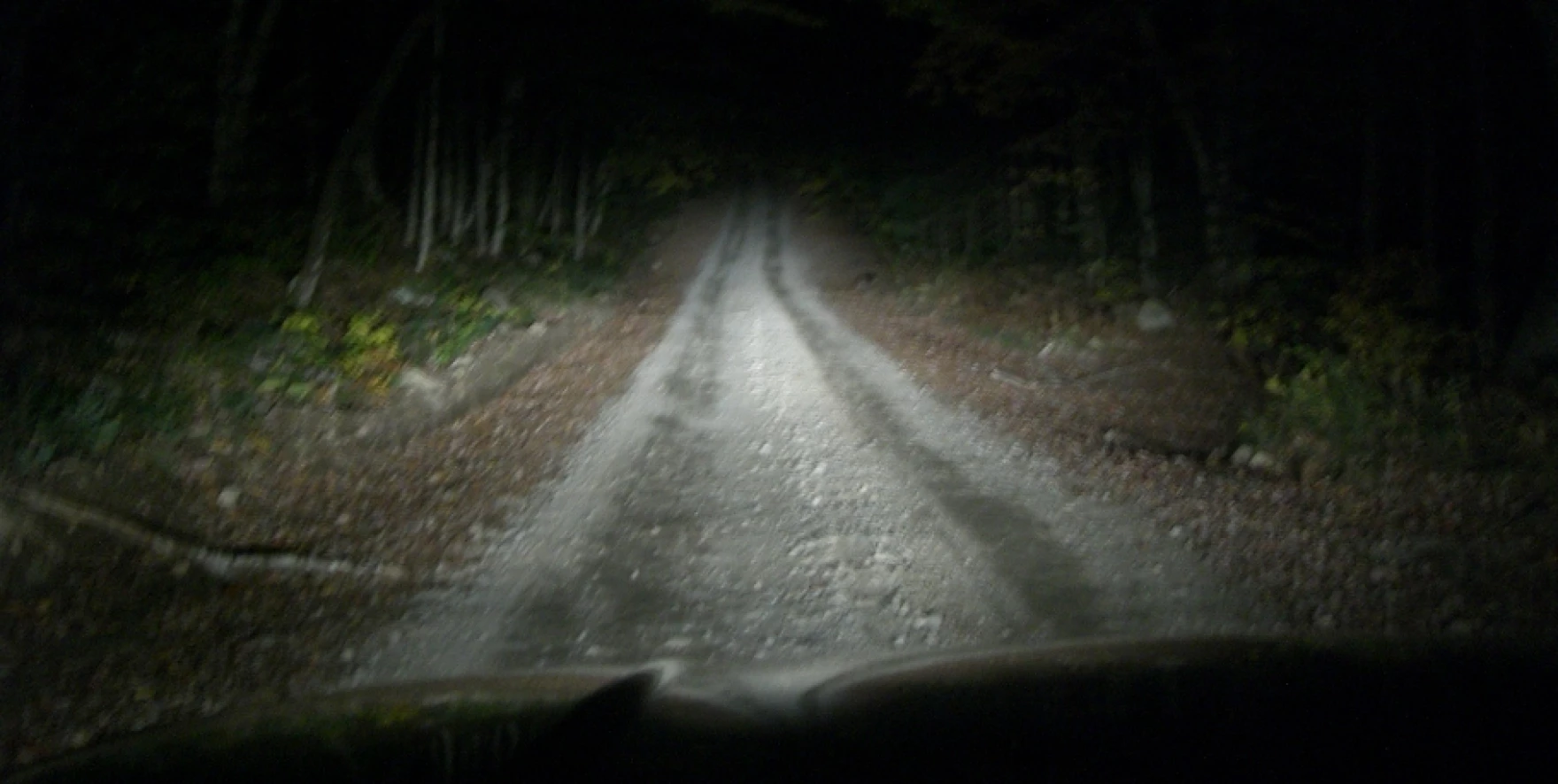
The road to one of Heike’s tomb in northern Michigan. (credit: Mike Lindsay)
LIVINGSTON: Eventually, Lindsay says they reached a clearing where they could see the tombs and what’s left of Heike’s settlement.
LINDSAY: My friend’s dad just parked the car and convinced us that we had to get out and walk. So of course, we’re very cautiously approaching, looking around at the dark forest that’s surrounding us … you know, half expecting to hear a scream.
LIVINGSTON: As the kids approached the tomb, Lindsay had just enough time to read what’s written on the stone before…
LINDSAY: He shut off the car and the lights. And then of course, we went yelling back as fast as we can, probably tripping over each other trying to get to the car which was locked… gets your heart racing.
LIVINGSTON: Lindsay’s visit to the tombs was just a light prank. But the gruesome fate of that little family is still told around Cheboygan and the rumor is bad things may happen if you disturb their final resting place.
—
LIVINGSTON: Alright, let’s pause for a second. You’ve probably heard stories like this before. Around the Great Lakes we share stories all the time about haunted shipwrecks or ghost towns and creatures like Bigfoot or the Dogman.
But when it comes to urban legends like Heike’s Tombs – how much is actually true? That’s coming up right after this.
(sponsorship message)
LIVINGSTON: Hi.
LIBRARY CLERK: Hi.
LIVINGSTON: I could use some help looking up if a book is available. It’s Local Legends of Cheboygan, Matthew Friday.
CLERK: Okay.
(types on keyboard)
LIVINGSTON: You don’t actually have to go far to find the real story of Heike’s Tombs. Cheboygan historian Matthew Friday already put in the work years ago.
CLERK: Well, we have “Legendary Locals of Cheboygan” is that it, maybe?
LIVINGSTON: I think that’s what it is. Yep.
CLERK: Okay. And that’s in the genealogy room.
LIVINGSTON: I check out his book and meet up with Friday at the Cheboygan Public Library. He says he grew up hearing about the legend of Heike’s Tombs.
MATTHEW FRIDAY: I mean, it might just be a goofy story. But it’s still one that everybody knows. You can talk to– you can go to somebody on the street here today, and ask ‘Hey, have you ever been out to Heike’s Tomb?’
And they’ll tell you, yes or no, or ‘Oh, yeah, I used to party out there a lot.’ But they’re gonna know what you’re talking about.
LIVINGSTON: Friday began tracking Heike’s life through public records and wrote a two-part article for the local newspaper in 2019. What he wrote could be the best summary of Heike’s life we have. And the truth was that a lot of what the legend says about him is blatantly false.
So, let’s debunk some of these myths. First, did Heike really murder his family? Well…
FRIDAY: He never married and never had any children that we’re aware of. But beyond that, you know, it’s anybody’s guess.
LIVINGSTON: We also know that there is nobody buried underneath the so-called “tombs.” Friday says he saw that when he visited them for his research. They’re monuments not tombs.
Also, was Heike really the loner-hermit he’s remembered as? Friday writes in his book and articles that, even that’s a stretch.
FRIDAY: “He liked his solitude but would walk to town from time to time for provisions and get a ride home from whoever would give him a lift.”
LIVINGSTON: Friday concludes that, in all probability, Henry J. Heike was just a man who wanted to live a simple life away from the hustle and bustle. Not dissimilar to many others who move near the Great Lakes looking for peace and quiet. He says we have to be careful about what stories we make up, because it involves a real person and their legacy.
FRIDAY: I think it’s a disservice to him to remember him as somebody who built haunted monuments or killed his family and buried them there or whatever other outrageous rumors they were. This is a man that clearly – whether he was mentally fit or not – just wanted peace and quiet.
LIVINGSTON: So if that’s the case, where does the legend of Heike’s Tombs come from? How does such a great deal of rumor and mystery surround this man and the monuments that he built? Well here’s what we do know about Heike’s life.
He was born in 1893 to a large family near Detroit. We know he became a bricklayer as a teenager, according to census data – which would explain his skill in working with stone.
We knew he moved to Cheboygan sometime between 1930 and 1950, the year he constructed his first monument.
Now onto those monuments. On the first one, he wrote in huge blocky letters made of smaller rocks. Some of the letters are backwards and words are misspelled. They jut out like braille.
This is what the inscription says, what Mike Lindsay read the night he visited it:
JMJ
ON THIS SPOT IN NOV 1950
I HJ HEIKE IN A DREAM
I SEEN JESUS
AS MEAK AND HUMBLE OF HEART
FRIDAY: Whether his visions were real or not, you know, you can decide that for yourself. But clearly, he took his faith very seriously and it influenced his life to a very substantial degree.
LIVINGSTON: On the other monument, he wrote:
JMJ
ST THERESA
LITTLE FLOWER OF JESUS
And he left his hand prints on it.
Friday says we have absolutely no way of knowing why he sought solitude in Cheboygan, and what exactly was going on with his religious visions. But what we’re left with is a void of information that’s begging to be filled with our own conclusions.
FRIDAY: Maybe he just wanted to, you know, live out by himself and devote a lot of his life to prayer … Of course, the other possibility, too, is that he was suffering from some kind of mental illness. You know, I mean, it’s not everybody that goes out and builds a stone cabin, and sees visions and builds monuments to where he thinks he sees something.
LIVINGSTON: That void of information and assumption we make to fill it – that’s what creates urban legends. They get passed along through word of mouth and can be morphed into tall tales. The story about the haunted house. The one about a mysterious neighbor, or scary creatures that go bump in the night.
Mike Lindsay, the guy who went to the tombs on Halloween, says these urban legends are important.
LINDSAY: That the element of mystery there allows people to fill in details with their own imagination, their own experiences. And I think that’s, you know, a force of good to, kind of, bring people together and the creativity that… sharing.
(street sounds, car driving by)
LIVINGSTON: Just 20 miles south of Cheboygan, is the headquarters of horror book author Christopher Wright – better known by his pen name Johnathan Rand. He’s the author of the popular ‘American Chillers’ book series. When he moved to the area, he too was intrigued by the legend of Heike’s Tombs.
JONATHAN RAND: Stories like that, they tend to, like a lot of stories, they tend to just grab you, and they get a mind of their own.
LIVINGSTON: He says he often draws inspiration from urban legends in order to make up his own stories.
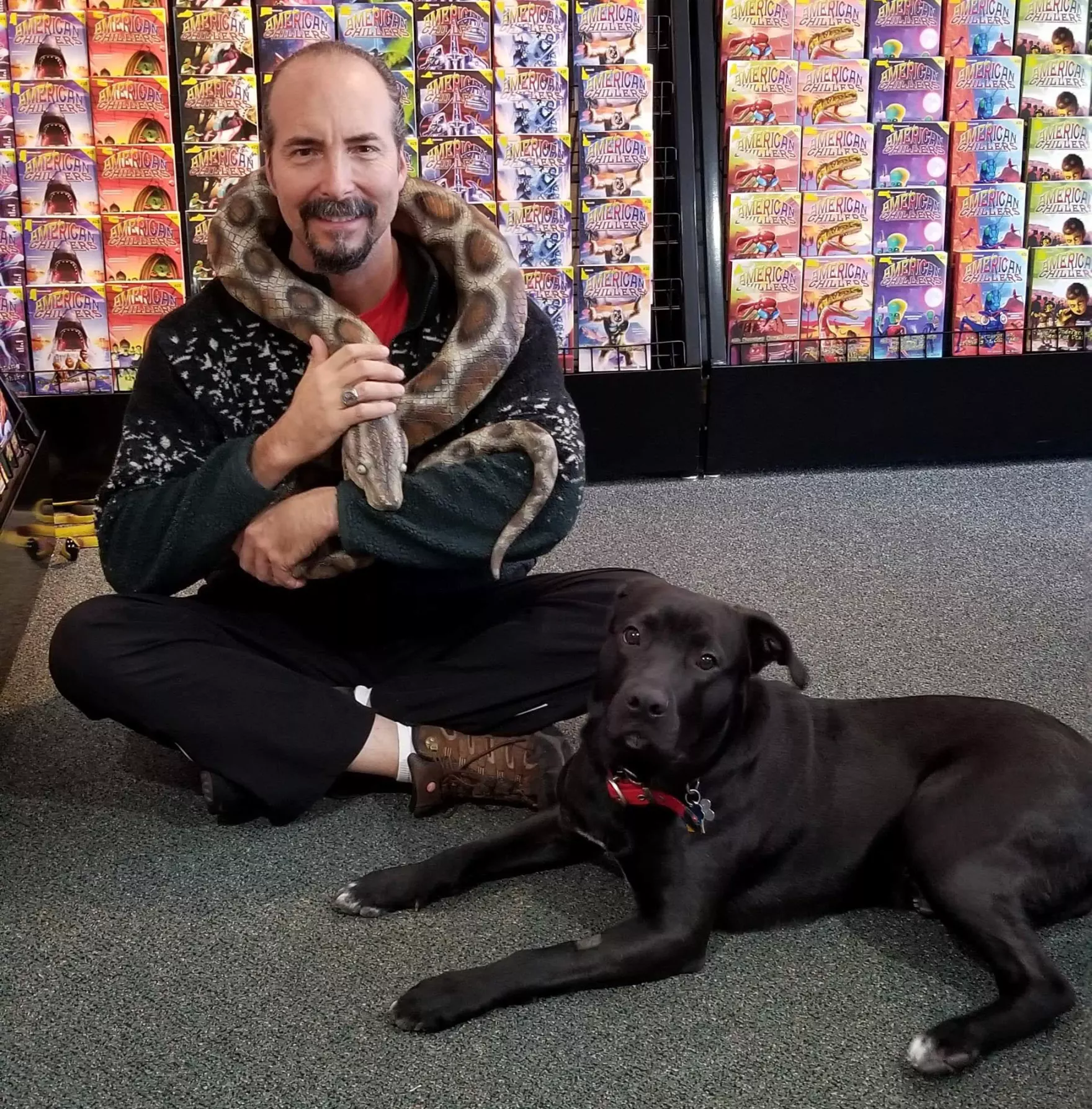
Johnathan Rand plays with his dog Brody and “Polly the Poisonous Plastic Python” inside “Chillermania” – his headquarters in Indian River, MI. (courtesy of the author)
LIVINGSTON: If he was alive today, what are some of the questions you’d want to ask him?
RAND: I would ask that if he – if he knew when he started this, this tomb thing that it would create such a stir in later years … If he understood that this would be, you know, the seeds of ghost stories for years to come.
LIVINGSTON: And he says these legends bring people together and enrich a culture.
RAND: Before the printed word, before we had books – storytelling was the way ideas were conveyed. And I think that’s something with these legends, whether it’s dog man or Heike’s Tomb, some of the ghost stories in the ghost ships or the haunted lighthouses, I think it’s something that’s important because it helps us develop our own imagination.
LIVINGSTON: The true end of Heike’s story is that he moved closer to the town of Cheboygan before spending his last few years in the Traverse City State Hospital – which was a mental institution. He died of natural causes and was buried back in Detroit.
The so-called tombs are now located on private property and closed off to the public. Thanks to historians, though, no matter how the legend inspires new generations, the truth won’t be too hard to find.
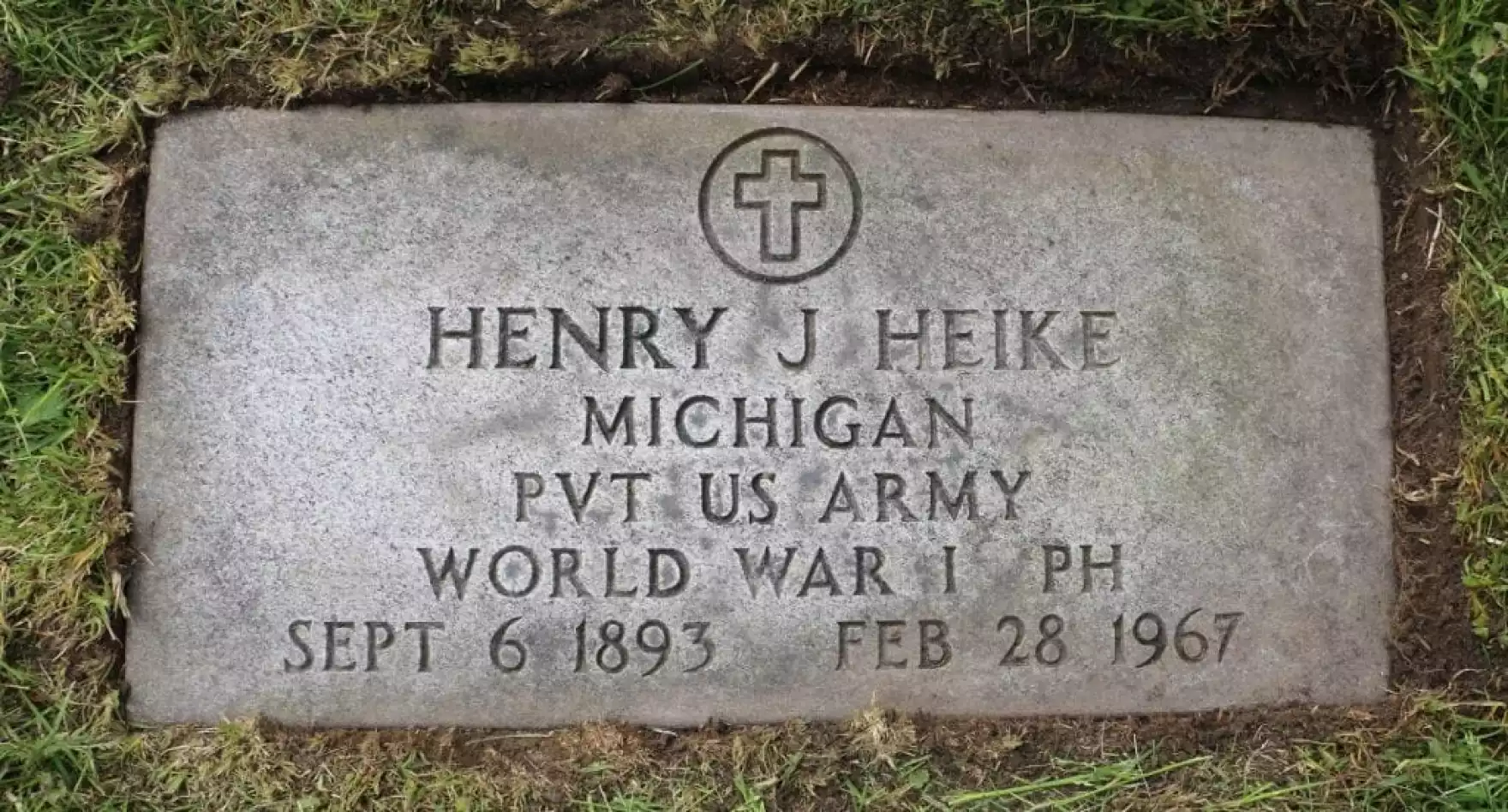
Henry Heike’s tombstone located in a Detroit cemetery. (credit: Keyhole Bar & Grill)
Catch more news at Great Lakes Now:
Points North: Doe, A Deer, A (Sterilized) Female Deer
Points North: Can AI Caribou Lead Us To Our Prehistoric Past?
Featured image: Two of Henry Heike’s tombs near Cheboygan, MI. (credit: Keyhole Bar & Grill and Cheboygan Daily Tribune via Matthew Friday)


